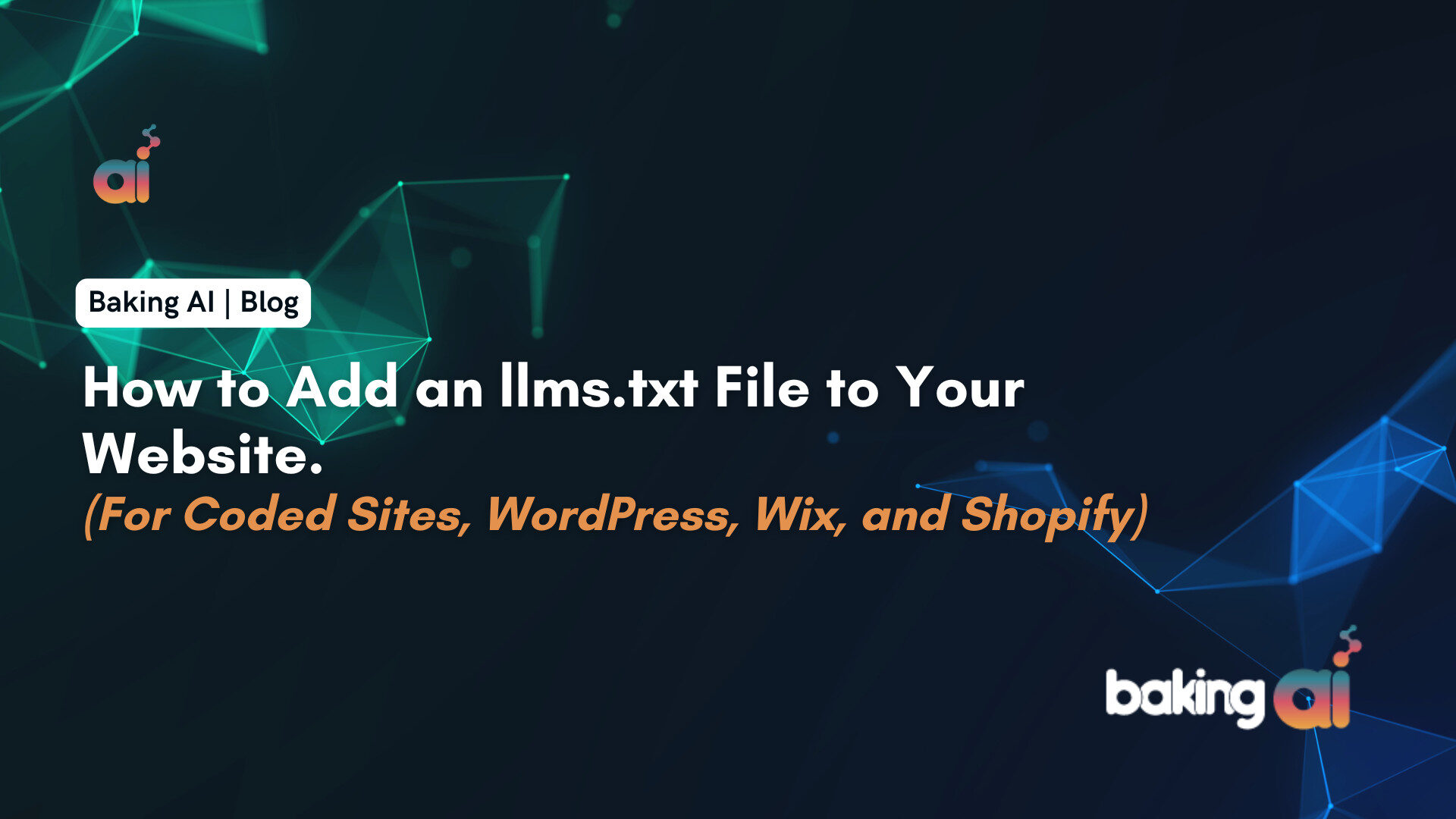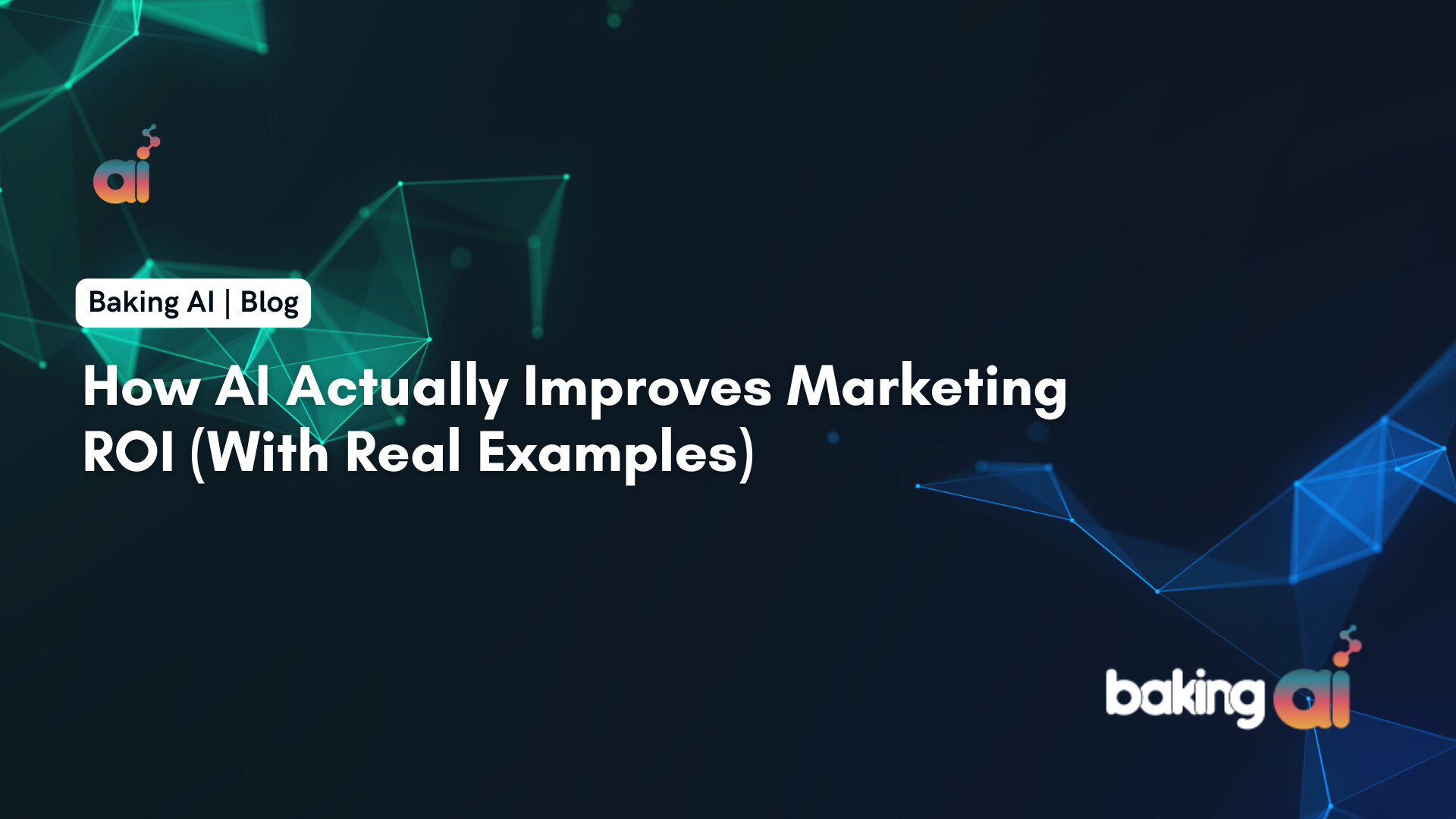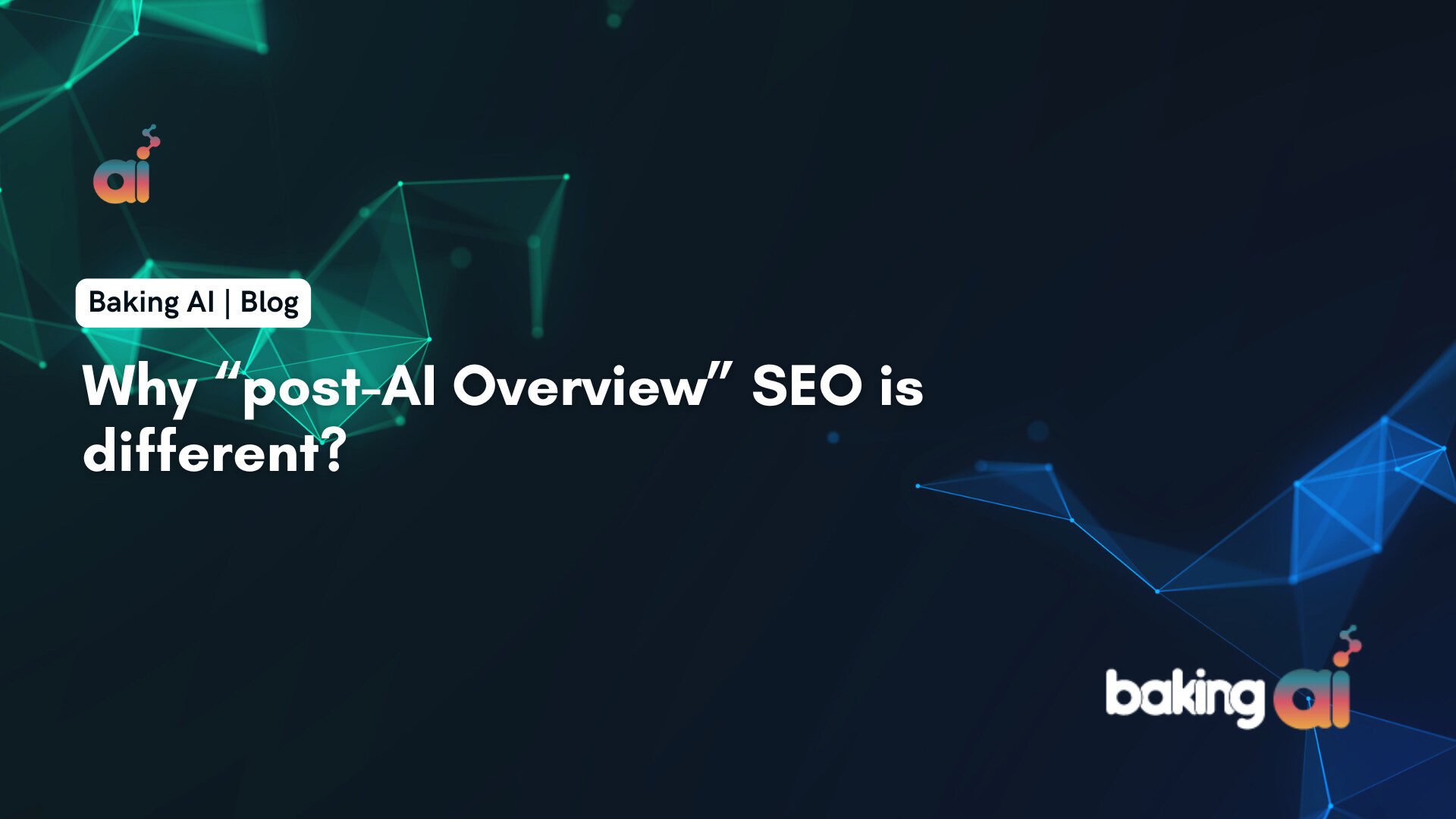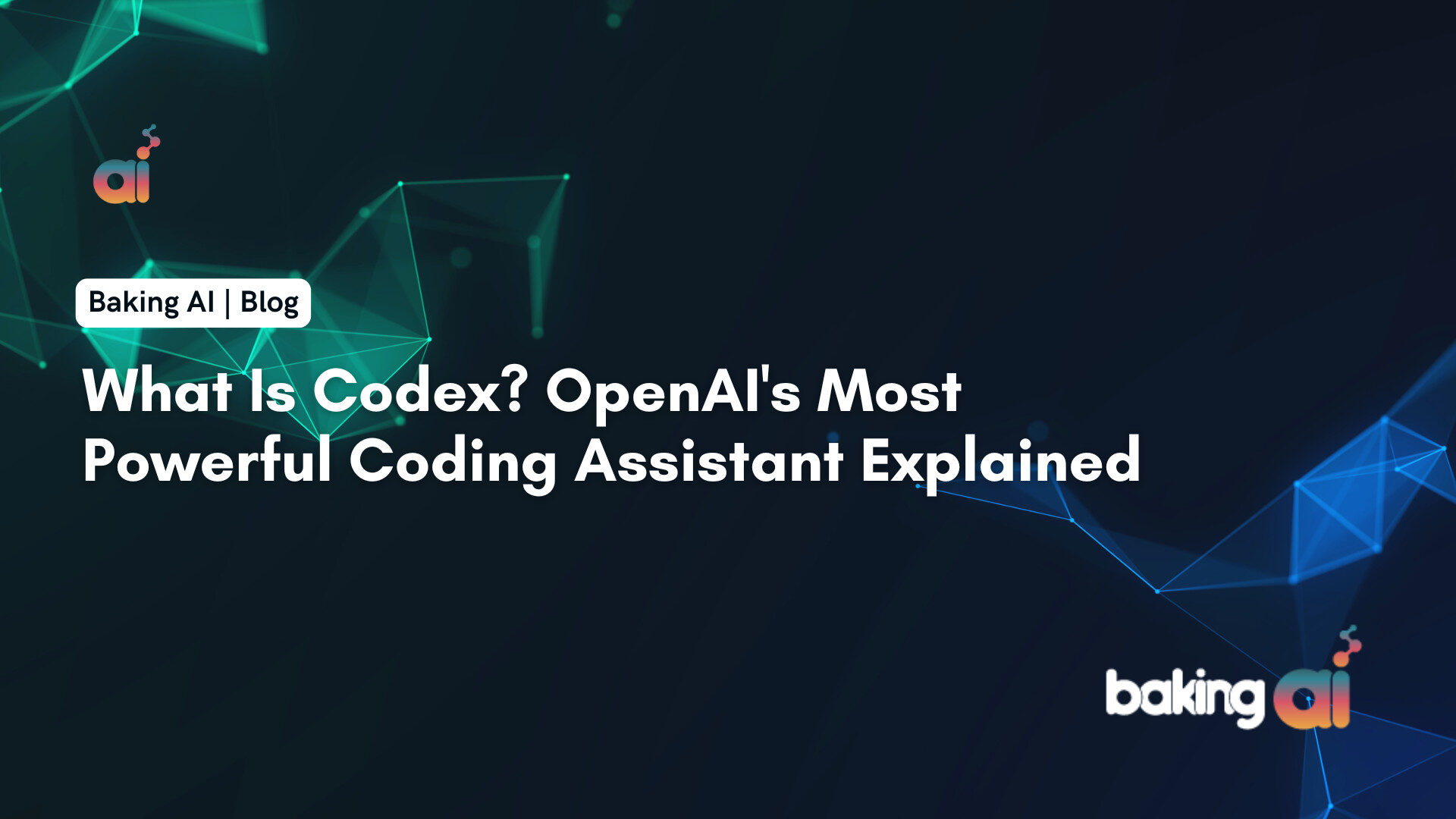Search engine optimization (SEO) has remained focused on understanding how search engines operate when ranking pages to achieve position one in search results. The constant advancement of technology triggers related changes in search engine algorithms particularly because of recent AI-based technology developments. The piece examines how AI modifies search engine algorithms alongside their effects on SEO practitioners’ work practices.
Looking to elevate your B2B brand with AI-driven marketing? At Baking AI, we specialize in brand marketing and SEO to help businesses like yours gain visibility, authority, and growth. Whether you need AI-powered SEO strategies, data-driven branding, or cutting-edge digital marketing solutions, our expert team is here to help! Book a consultation today or email us at hello@bakingai.com to experience the power of AI-driven marketing. Let’s build your brand for the future!
What Is AI in the Context of SEO?
The implementation of machine-learning models together with natural language processing techniques under Artificial Intelligence (AI) search systems enables search engines to understand user intentions and page contents better. System performance boosts through artificial intelligence algorithms allows them to assess listeners quickly while giving better specific and tailored search outcomes than traditional rule-based systems.
Key AI Concepts in SEO
- Machine Learning (ML): Systems learn from existing data to make predictions or decisions without being explicitly programmed.
- Natural Language Processing (NLP): The ability of a machine to understand human language—both written and spoken—on a contextual level.
Key AI-Driven Algorithms and Updates
a. RankBrain
- Introduction: Google’s RankBrain was one of the first major AI components to transform how the search giant interprets queries.
- Purpose: It helps interpret ambiguous or unique queries by measuring how users interact with the search results (e.g., clicking on a link, bouncing back, dwelling on the page).
- Impact on SEO: Traditional keyword matching became less critical. Instead, optimizing for user intent and readability started playing a more significant role.
b. BERT (Bidirectional Encoder Representations from Transformers)
- Introduction: BERT was announced by Google in 2019. It focuses on understanding the context of words in a sentence, rather than just the keyword string.
- Purpose: Helps Google better grasp the nuances of language, especially in longer, more conversational queries.
- Impact on SEO: Content that is semantically rich and addresses user intent ranks better than content stuffed with keywords. Marketers need to create content that “answers” user questions naturally.
c. MUM (Multitask Unified Model)
- Introduction: MUM goes even further by understanding complex queries and analyzing information across different formats (text, images, videos).
- Purpose: It aims to answer multifaceted queries with fewer follow-up searches, pulling from various media types.
- Impact on SEO: Signals an evolving future where search engines become even more context-aware. Marketers should focus on offering comprehensive, multimedia content to address user needs holistically.
Ways AI Is Transforming SEO
a. Improved Understanding of User Intent
AI algorithms parse the context behind users’ queries to determine the most relevant answers. This is especially true for voice-enabled or long-tail queries that reflect a user’s intent more precisely.
What You Can Do
- Target long-tail keywords that better capture user intent.
- Use FAQ pages or structured content to address specific user questions.
b. Personalization and Localization
AI allows search engines to personalize results based on a user’s past behavior, location, and device type. As AI becomes more adept, two users searching for the same term can receive very different search results, tailored to their personal contexts.
What You Can Do
- Use location-specific keywords if local search is relevant to your business.
- Optimize for mobile experience and voice search, as AI tailors results more heavily on mobile and voice-based devices.
c. Content Creation and Optimization
Some AI tools can perform topic research, provide content outlines, or even generate first drafts of text. While these tools may not replace human creativity and strategic insight, they do speed up the content-creation process.
What You Can Do
- Use AI-driven content generation tools to brainstorm topic ideas or support your writing process.
- Utilize SEO analysis software that uses AI to recommend improvements in real time (e.g., adjusting keyword density or reading level).
d. Semantic Search and Rich Snippets
Semantic search relies on AI to understand the relationships between entities—people, places, things—and the context around them. Rich snippets (e.g., featured snippets, knowledge panels) often display in search results because they precisely answer a user’s query.
What You Can Do
- Structure your data with schema markup to help search engines identify what your page content represents (events, products, reviews, FAQs).
- Write concise, direct answers in your content that could be pulled into featured snippets.
Best Practices for AI-Driven SEO
- Focus on High-Quality, Relevant Content: Content should provide actual value—solving problems, answering questions, and being engaging to users.
- Optimize for Intent, Not Just Keywords: Research the intent behind your users’ searches. Align your content to meet that intent.
- Leverage Schema and Structured Data: AI algorithms love structured data because it clarifies context, improving the chances for rich snippets.
- Enhance User Experience (UX): Fast loading times, mobile responsiveness, and clear site navigation remain crucial—AI engines weigh user behavior metrics more than ever.
- Use Analytics and AI Tools to Inform Strategy: Keep tabs on search console data, traffic stats, and engagement. AI-powered analytics can highlight trends and opportunities.
- Stay Adaptable: AI-based algorithms evolve quickly; remain agile to shift strategies based on new algorithm changes and user behavior patterns.
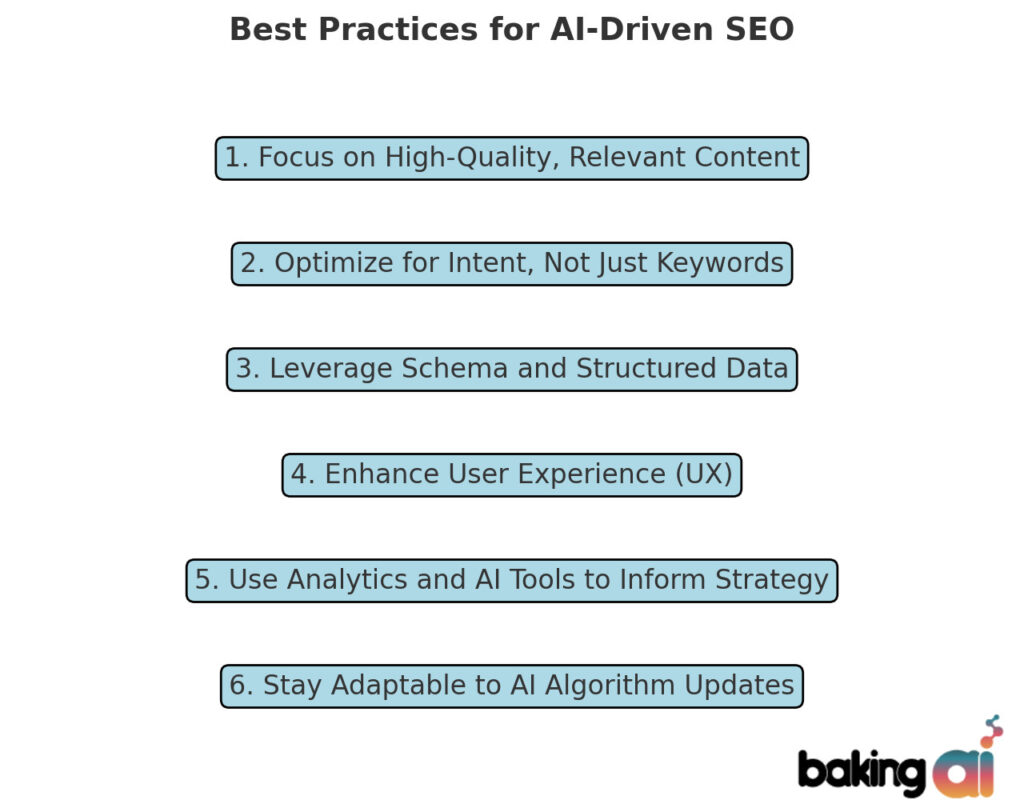
Future Outlook: What Lies Ahead
- Voice and Visual Search Growth: As voice-activated devices and image search become more common, AI will play a central role in interpreting complex or multimodal queries.
- Conversational Experiences: With chatbots and language models improving daily, the lines between “search” and “conversation” will blur.
- Predictive Search: As AI models gain deeper insight into user habits, expect more proactive results—surfacing information before a user even realizes they need it.
For marketers and SEO professionals, the takeaway is clear: embrace AI-driven changes. Rather than attempting to “game the system,” focus on optimizing for the best user experience. Provide relevant, clear, and authoritative content, and let the algorithms do the rest.
Final Thoughts
AI is reshaping modern SEO by enabling search engines to understand context, user intent, and language more deeply than ever before. The key for any SEO professional is to remain adaptable: keep producing high-value content, leverage new tools, and optimize for the changing ways people search. AI may be complex, but its driving principle is simple—provide users with the most helpful results possible. If your content does that, you’ll be well-prepared for the future of search.



